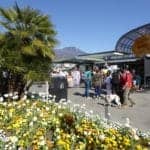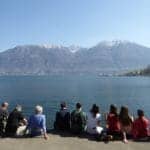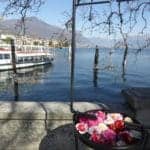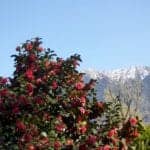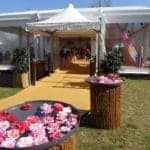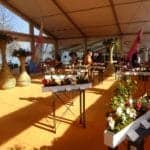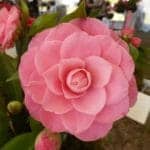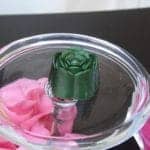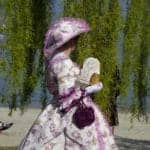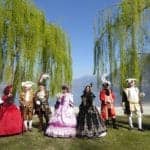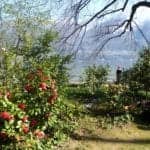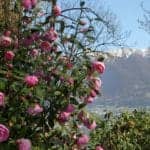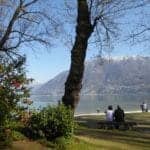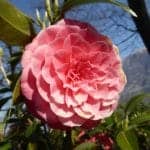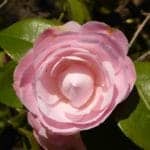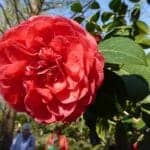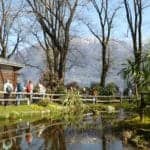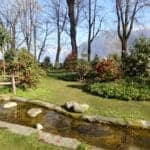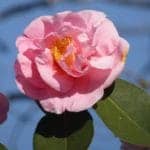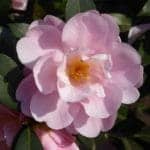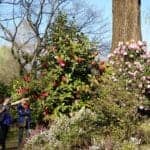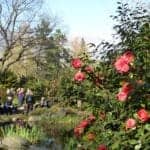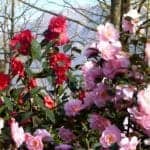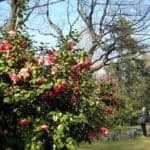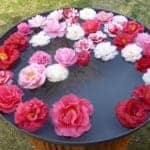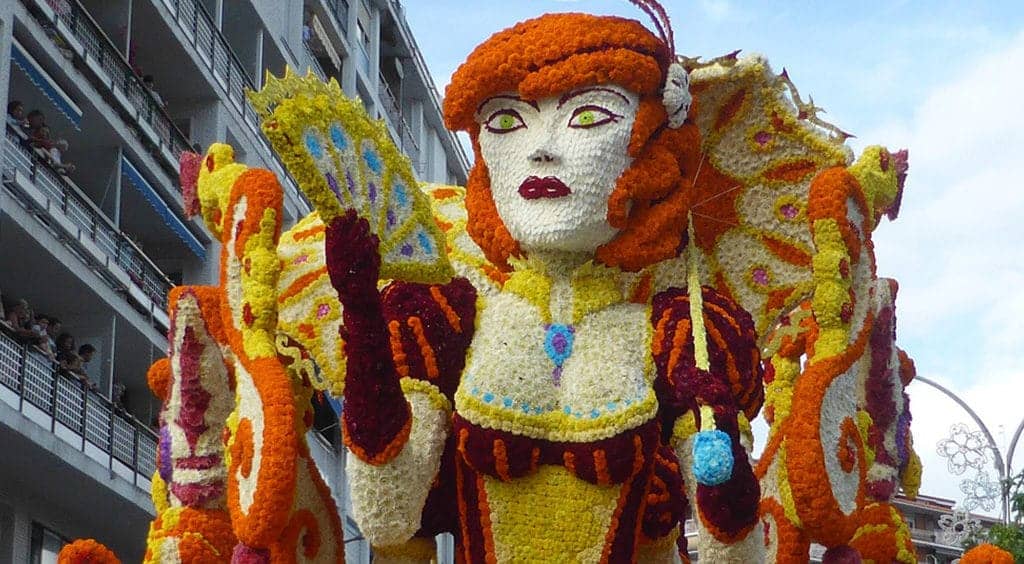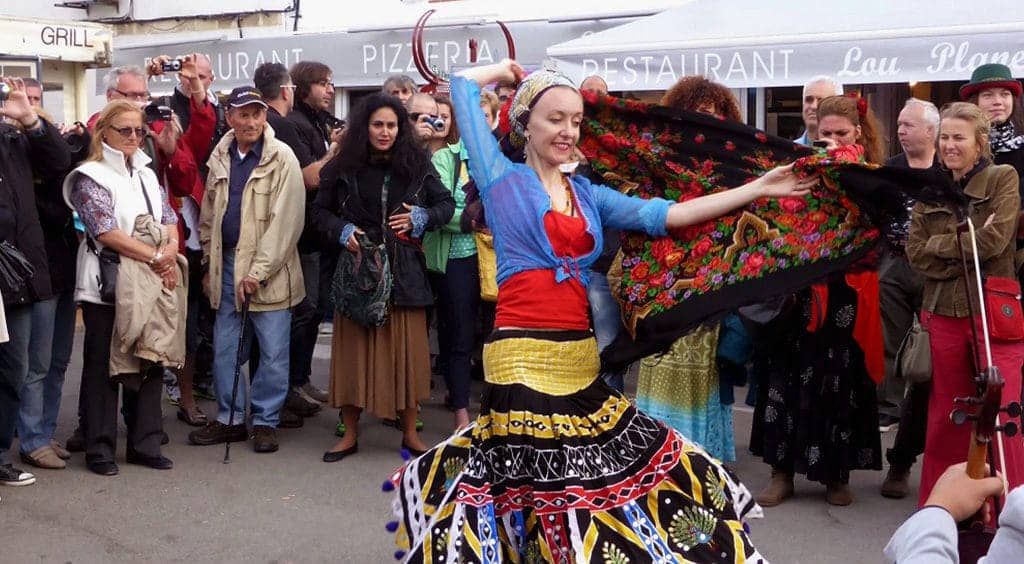The Locarno Camellia exhibition/Camelie Locarno
The most important camellias exhibition in Europe has amazing scenery: imagine red and pink flowering shrubs on the shore of the lake, surrounded by the high peaks covered by snow...
Locarno, a small Swiss town, lies on the northern shore of Lake Maggiore. Due to the extremely favorable microclimate in which Mediterranean and tropical flora thrive, it has become a popular tourist destination, famous for its beauty and picturesqueness. While people behind the nearby mountains are still dying of cold, here's already spring. It comes fast and unexpectedly. Parks and gardens light up with colors; mimosa, magnolias, rhododendrons and azaleas seem to be competing which one is the most beautiful. In vain, because the queen of Locarno is camellia. They have been cultivating it for over 150 years; it grows in every garden.
Therefore, it is quite logical that the most important camellia exhibition in Europe takes place here at the end of March (it is outperformed only by those organized in Japan, the native country of the flower). It was first held in 1923, and 25,000 visitors came to see it. A year later, the organizers had to ask locals for help with accommodation, each household was required to provide at least one bed. The event took place until 1940. In 1952, the city relaunched it with the new name - The Flower Festival. It lasted three days and involved demonstrations of folk dances of the neighboring valleys and culminated with the Sunday parade of the decorated carts. In this form, it was last held in 1984.
I visited the 22nd year.
I'm not a very mountain person, but when I got off the train, my jaw dropped to the floor. Imagine tall peaks with whitish summits, surrounding a dark-blue lake where several yachts rocked on water. The streets, full of colors, descended toward the promenade, where the palm trees stood in the beds of tulips, pansies and hyacinths. Dazzled by the splendor and focused on search of the best angle to take a picture I tripped over the curb and almost fell straight under the approaching car.
The Camellia Park is located half an hour from the center; it was a pleasant walk along the waterfront.
The exhibition could not have more beautiful scenery. It lay on the shore of the lake, lined by willows with fresh new leaves. Their emerald green color contrasted beautifully with the historical costumes of some gentlemen and ladies - as it turned out, it was the Venetian Masks Day. On both sides the snowy mountains soared above us.
On the area of 10,000 square meters over 950 types of camellias bloom from October to spring, but the end of March is the peak of the season.
In a marquee erected on site, arranged bouquets and 250 different flower varieties from private gardens in the region were on display.
I was surprised by the colors, the size of the inflorescence and the quantity of the petals; I thought that camellias were just those tender white flowers I had bought twice in a pot (and they died twice). Fact is that they are small and big; red, white-red, pink, burgundy, violet and orange; some have only a few petals and others resemble a hibiscus or a rose.
Outside, in the park, there was literally a camellia forest; huge, elegant flowers looked like made of paper; as if somebody fixed them on the twigs. They romantically protected the lake and shielded the bench where a couple in love was sitting. Looking at the boscage of long branches with pink heads, I was convinced that a prince would appear in a moment and cut his way to the Sleeping Beauty...
Camellias originate from Asia, especially from China and Japan, but also from India. They were introduced into Europe by Englishmen in the second half of the 18th century, then they spread to America, Australia and New Zealand. Swedish botanist Carl Linnaeus named them in honor of Jesuit missionary Georg Joseph Kamel.
The bushes can rise to the height of ten meters and are long-lived; in the countries of origin, some of them are known to be more than 800 years old. There are 40,000 species registered in the International Registry of Camellias and judging by what I saw in the park, the names are very original and romantic: Fire Dance, Valentine's Day, Satan's Robe, General George Patton, Sweet Dream, Midnight Magic, White Christmas, Silver dollar or Snowfall...
The program included traditional concerts, souvenir stalls and a small market where you could buy bouquets and flowers in pots.
Here I learnt a little curiosity: Did you know that a tea plant is a species of camellia?! Well, I didn't. Camelia Sinensis (or Thea sinensis) comes from Southeast Asia. Today everybody knows how to prepare tea, but according to legend, the first one to drink it was Chinese Emperor Shennong in 2737 BC. Because of hygiene, he always asked his servants to boil his drinking water. One day, while sitting under the tree and watching them, he saw a few leaves from the wild tea bush fell into the pot. Hot liquid turned yellowish and flavored and when the emperor tasted it, he found it delicious and refreshing. He began to drink it regularly. Tea spread rapidly in China, but to Europe, it arrived only 4300 years later!
At the end of my visit, I bought a small box of chocolates Camelia Locarno. This praline was officially presented at the EXPO in Milan in May 2015, it has a shape of flower, contains white chocolate, sweet undertone of jasmine and ginger gelatin, which is a reference to the Far East... Yummy!






